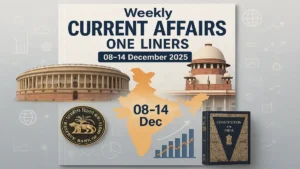NASA’s $10 billion telescopes James Webb Space Telescope designed to capture the first glimpse of the universe just shortly after the Big Bang is targeted for blastoff from the European Space Agency’s Kourou, French Guiana. The revolutionary world’s first-of-its-kind space-science observatory of the next decade will capture the earliest galaxies believed to have formed during the early universe’s formation. The new telescope will help scientists to probe the structures and origins of our universe and our place in it.
Dimensions of the telescope:
The telescope is unequalled in size and complexity. Its mirror measures 6.5 metres (21 feet) in diameter — three times the size of the Hubble’s mirror — and is made of 18 hexagonal sections. It is so large that it had to be folded to fit into the rocket.
Key Facts:
- Webb will be the premier space observatory for astronomers worldwide to extend the discoveries of the Hubble Space Telescope.
- It will be the largest telescope ever placed in space and 100 times more powerful than Hubble.
- The telescope will peer back in time over 13.5 billion years to see the first galaxies born after the Big Bang.
- It will be the biggest telescope ever launched into space with a total mass of 6200 kg.
- Webb can see water vapour in extrasolar planet atmospheres.
- They detect the heat signature of a bumblebee at the distance of the moon and can see details of the size of a US penny at the distance of about 24 miles (40 km).
Important takeaways for all competitive exams:
- NASA administrator: Bill Nelson;
- Headquarters of NASA: Washington D.C., United States;
- NASA Founded: 1 October 1958.



 Weekly Current Affairs One Liners 08th t...
Weekly Current Affairs One Liners 08th t...
 Which Indian City is Known as the Footwe...
Which Indian City is Known as the Footwe...
 Which Desert is known as the Cold Desert...
Which Desert is known as the Cold Desert...







